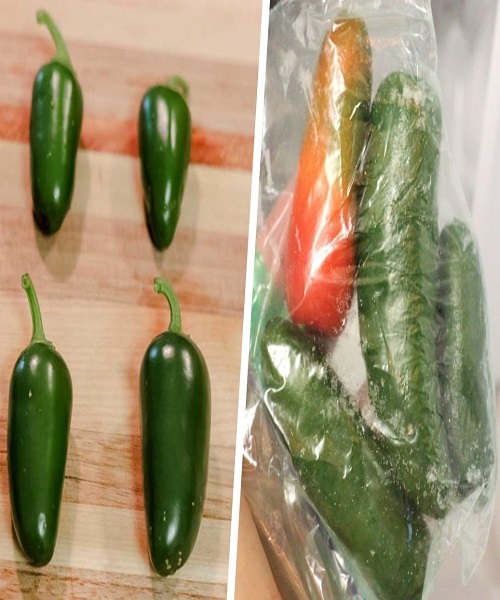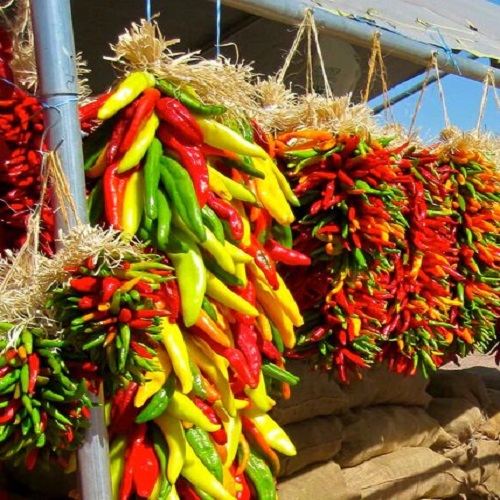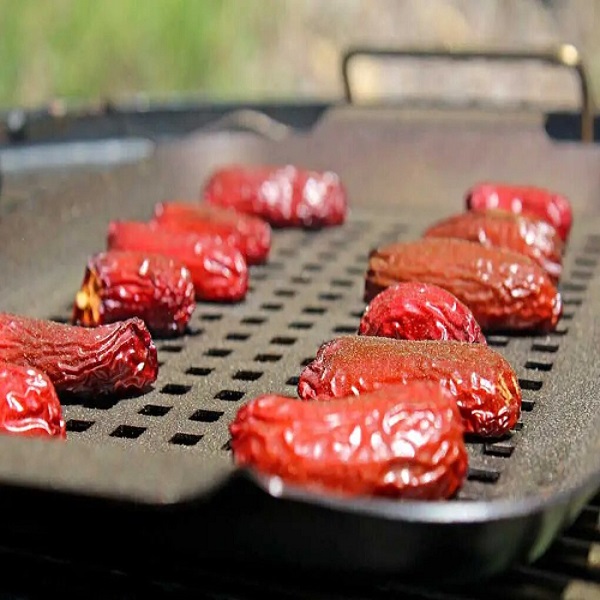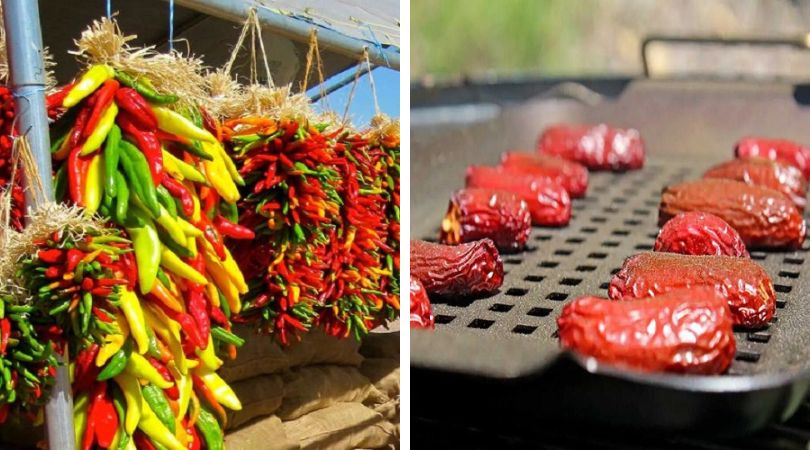Is your vegetable garden producing a lot of peppers? Here are some ideas for preserving peppers over the winter, including freezing and drying. How to Preserve Peppers?
FREEZING PEPPERS
Freezing peppers is one of our favorite non-canned preservation methods. All kinds of peppers can be frozen, and it’s a breeze to do so.
When they defrost, they won’t be as crisp as a fresh pepper. For meals like soups, stews, and casseroles, they’re a terrific addition.
Sliced bell peppers, entire spicy peppers, and roasted red peppers are all kept in the freezer. So much so that we keep cooked stuffed bell peppers in the freezer for quick and easy meals throughout the winter.

Slicings of Bell Pepper
Remove the stems and seeds from the bell peppers by cutting off the tops. As a final step, slice each pepper into small strips.
Place the pepper strips on a baking sheet and flash freeze them for 15 to 30 minutes, depending on the thickness of the strips. The peppers won’t cling together if they’re frozen this way. Then, for long-term preservation, transfer them to airtight, freezer-safe containers or bags.
Freeze a meal or an appetizer
Preserving peppers in a prepared meal is another of our favorite methods of preserving them without the need of canning. It’s a terrific way to enjoy your peppers all year long, from soups to stuffed peppers!
We recommend cooking the filled green peppers first in order to preserve their flavor and freshness for longer periods of time. Just don’t use any tomato sauce or soup in your stuffed pepper recipe.
If they sit in a lot of liquid during the cooking process, they will become mushy.
Remove the peppers from the oven once they’ve reached the desired al dente texture and allow them to cool fully.
Then, on a baking sheet, place them in the freezer. Place them in an airtight container or a FoodSaver Bag once they are frozen solid.
Whole Peppers
However, freezing whole peppers is the quickest and easiest method of preserving peppers without canning.
In a matter of minutes, you can harvest your peppers, wash them, and store them in the freezer.
For freezing hot peppers, this is your go-to approach. Freeze your hot peppers in resealable freezer bags because you rarely need more than one or two in a single recipe.
This makes it possible for you to have access to specific peppers at any time of the year.
DRYING PEPPERS
Peppers of all sorts can be dehydrated, and this is an excellent alternative to canning for preserving peppers.
Peppers can be dried in a hot, sunny spot, in a dehydrator set to 125°F, or in the lowest possible setting of an electric oven. It’s critical to keep in mind that the water content, size, and air humidity all have a role in how quickly peppers dry out.
Peppers lose water content more slowly as they become thicker and more humid. Remove the stem, seeds, and ribs from large peppers before slicing or chopping them up.
Drying peppers of comparable size together reduces the amount of attention that you must commit to removing the peppers that are done sooner than the others.

Dehydrating Peppers as a Whole
When drying small peppers, such as the Chinese 5 Color, cayenne peppers, or habanero peppers, you can do so whole. As a result, in order to speed up drying, remove the stem and the top.
It is entirely up to you whether or not to remove the seeds. Before dehydrating, you can remove the seeds if you’d like. Dehydrating the peppers allows them to be easily shaken out. If you’re creating spicy pepper powder, this is an excellent way to utilize it.
The dried hot peppers should have a good crunch to them when they’re finished drying. Use a coffee grinder to ground them into powder. Do this in a well-ventilated environment to avoid any issues.
PREPARE THE CHIPOTLE PEPPERS
As a final option, you can create Chipotle Peppers as a way to store peppers without canning them.
Chipotle peppers are a reddened variety of jalapeño that have been allowed to mature past their prime. In a smoker, place the whole red jalapenos and roast them until they are dry.
Keep them in an air-tight jar in your pantry until you’re ready to utilize them.
Chipotle in Adobo Sauce can also be made at home and frozen for later use.
Even in the dead of winter, you may reap the rewards of all that hard work in the garden by preserving peppers without the use of canning.

Enjoy!

